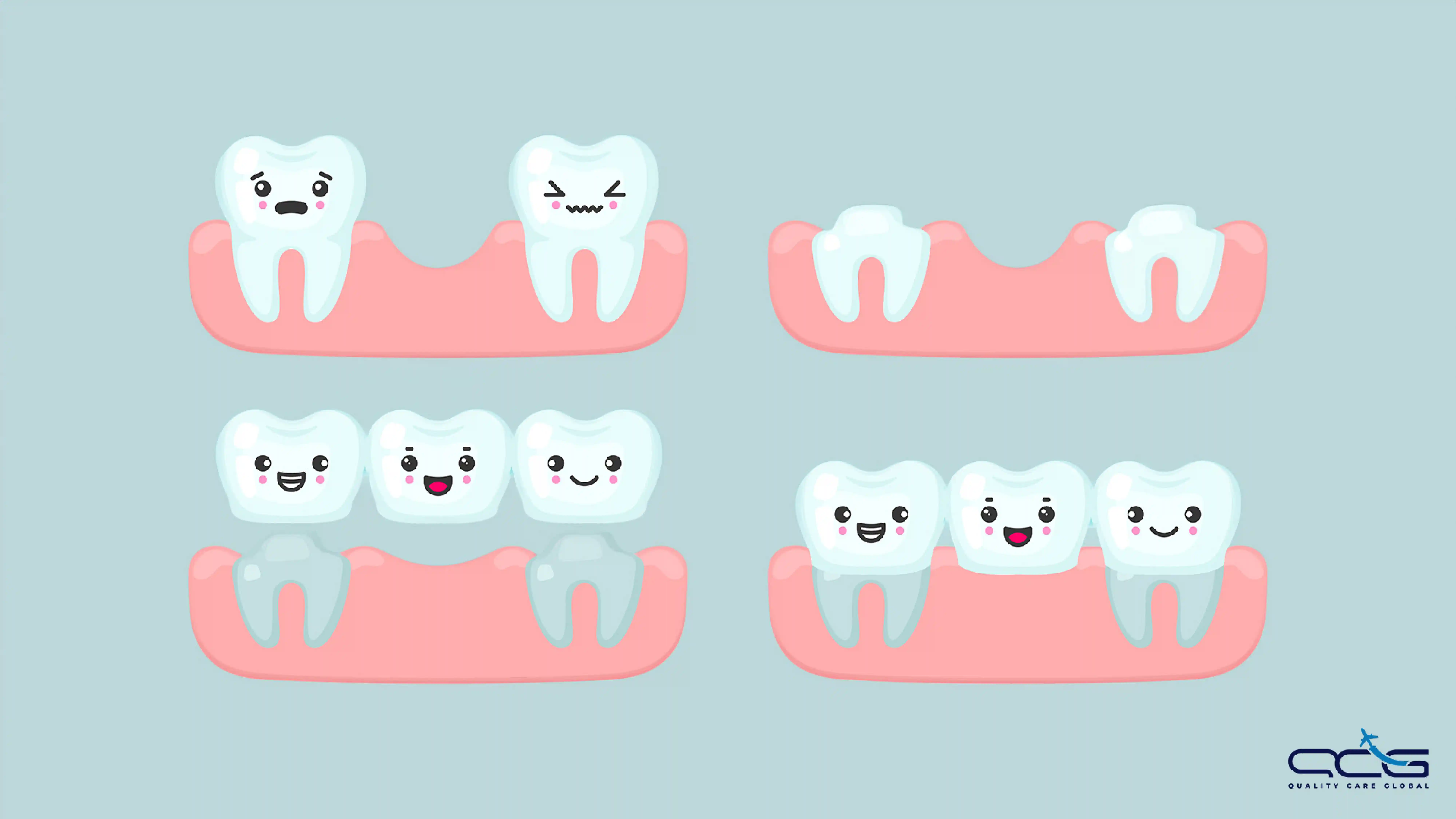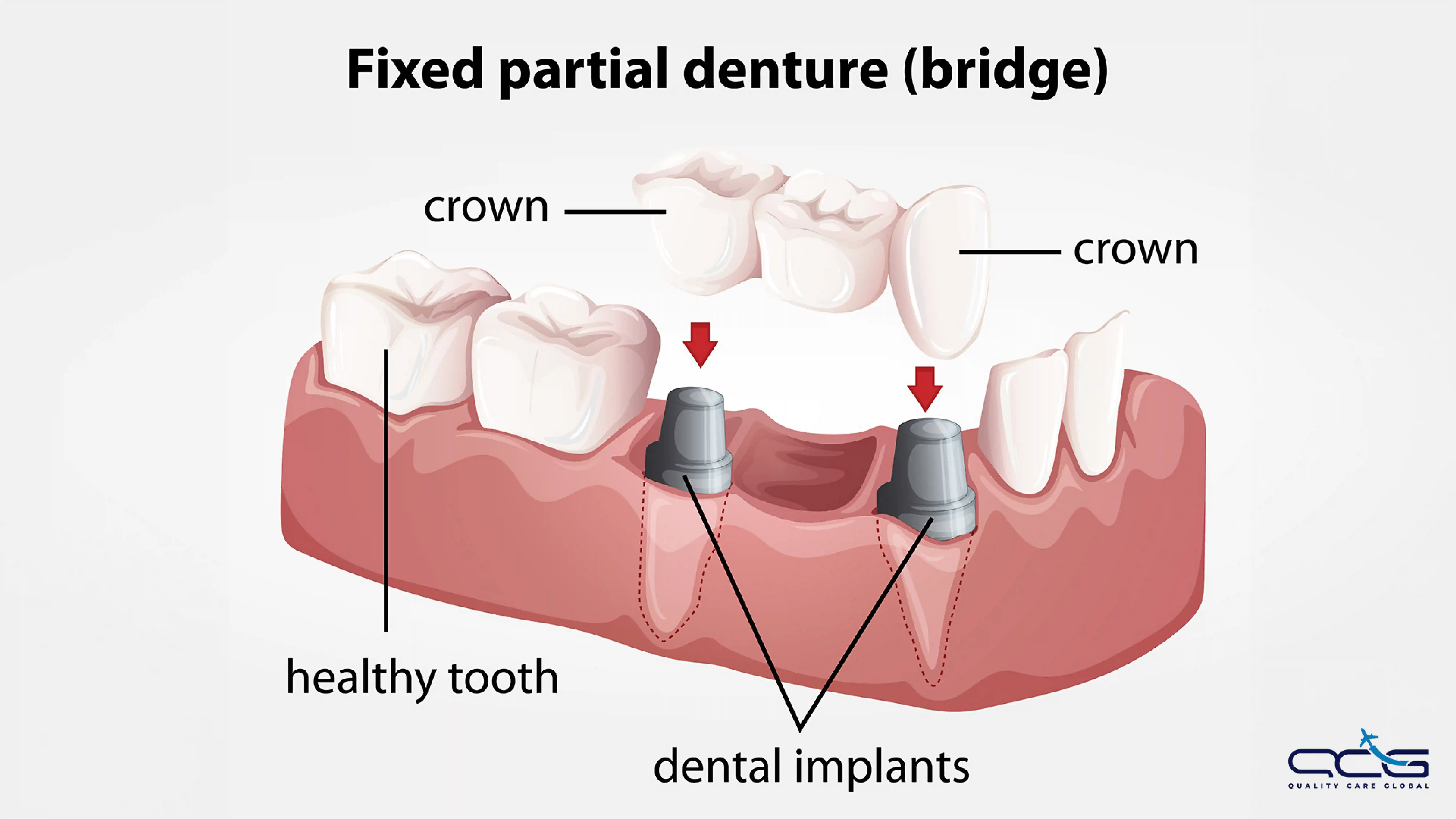Dental Bridges vs. Implants: What’s the Difference and Which is Right for You?

Missing a tooth (or teeth) can impact your confidence, your oral health, and your ability to eat comfortably. Thankfully, modern dentistry offers effective solutions: dental bridges and dental implants. Both restore your smile, but they work quite differently. Let's break down the key differences to help you understand which might be the right choice for you.
Understanding Dental Bridges and Implants
Dental Bridges: The Traditional Solution
A dental bridge is a fixed dental restoration used to replace one or more missing teeth by joining an artificial tooth definitively to adjacent teeth or dental implants. The bridge spans the area where teeth are missing and is cemented to the natural teeth or implants surrounding the empty space. Here's how it works:
- Support: A bridge is anchored by the natural teeth (or dental implants) on either side of the gap. These supporting teeth are called abutment teeth.
- The Bridge Itself: The bridge consists of one or more artificial teeth (pontics) and crowns that are placed over the abutment teeth.
- Process: Getting a bridge typically takes a few weeks and involves multiple dental visits for preparation, impressions, and placement.
Pros of Dental Bridges:
- Quick Procedure: Getting a bridge usually requires only two visits to the dentist and is completed within a few weeks.
- Non-Surgical: Unlike implants, bridges do not require surgery, which makes them a simpler and less invasive solution.
- Cost: Often more affordable than implants.
- Aesthetics: Bridges can be color-matched to your natural teeth for a seamless look.
Cons of Dental Bridges:
- Durability: Bridges typically last five to seven years, sometimes longer, but they will likely need to be replaced at some point.
- Tooth Preparation: To place a bridge, the adjacent teeth must be reshaped to support the bridge, which can compromise their structural integrity.
- Hygiene Challenges: Cleaning under and around the bridge can be challenging and requires special flossing tools to prevent decay and gum disease.
- No Bone Stimulation: Bridges don't address the underlying bone loss that can occur when a tooth is missing.

Dental Implants: The Modern Alternative
Dental implants are a more advanced option for replacing missing teeth. They mimic the entire tooth structure, including the root. Here's how they work:
- The Implant: A small titanium post is surgically placed into your jawbone, serving as the artificial root.
- Healing and Integration: Over several months, the implant fuses with the surrounding bone in a process called osseointegration.
- Restoration: Once healed, a custom-made crown is attached to the implant.
Pros of Dental Implants:
- Natural Feel and Function: Implants look, feel, and function very much like natural teeth.
- Longevity: Implants are a long-term solution and can last a lifetime with proper care.
- Bone Health: They help preserve natural bone and can even stimulate bone growth.
- Independent: Implants don't affect neighboring teeth.
Cons of Dental Implants:
- Surgery: Implants require a surgical procedure and a healing period.
- Cost: Implants are generally more expensive than other types of dental restoration.
- Not for Everyone: Certain medical conditions and insufficient bone density can make implants unsuitable.
- Time-Consuming: The process can take several months from start to finish as the implant must bond with the bone before the prosthetic tooth can be placed.

How to Choose the Right Option for You?
The best option for replacing a missing tooth depends on several factors:
- Oral Health Condition: Your dentist will evaluate the health of your gums and jawbone. If you have healthy gums and sufficient bone density, you might be a good candidate for implants. If not, a bridge might be the more suitable option.
- Budget: Analyze your finances to see which option fits your budget, considering not only initial costs but also long-term maintenance.
- Healing Time: Dental bridges typically require only a few weeks for completion, while implants involve a multi-stage process with several months of healing between the surgical placement and the attachment of the final crown.
Ultimately, consulting with a dental professional is crucial. At Quality Care Global, we connect you with top dental experts who can guide you through the process and help ensure that you choose the treatment that aligns best with your dental needs and lifestyle preferences. Choosing the right dental restoration can dramatically improve your quality of life, so it’s worth considering all aspects carefully.

